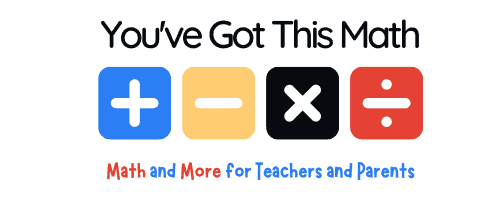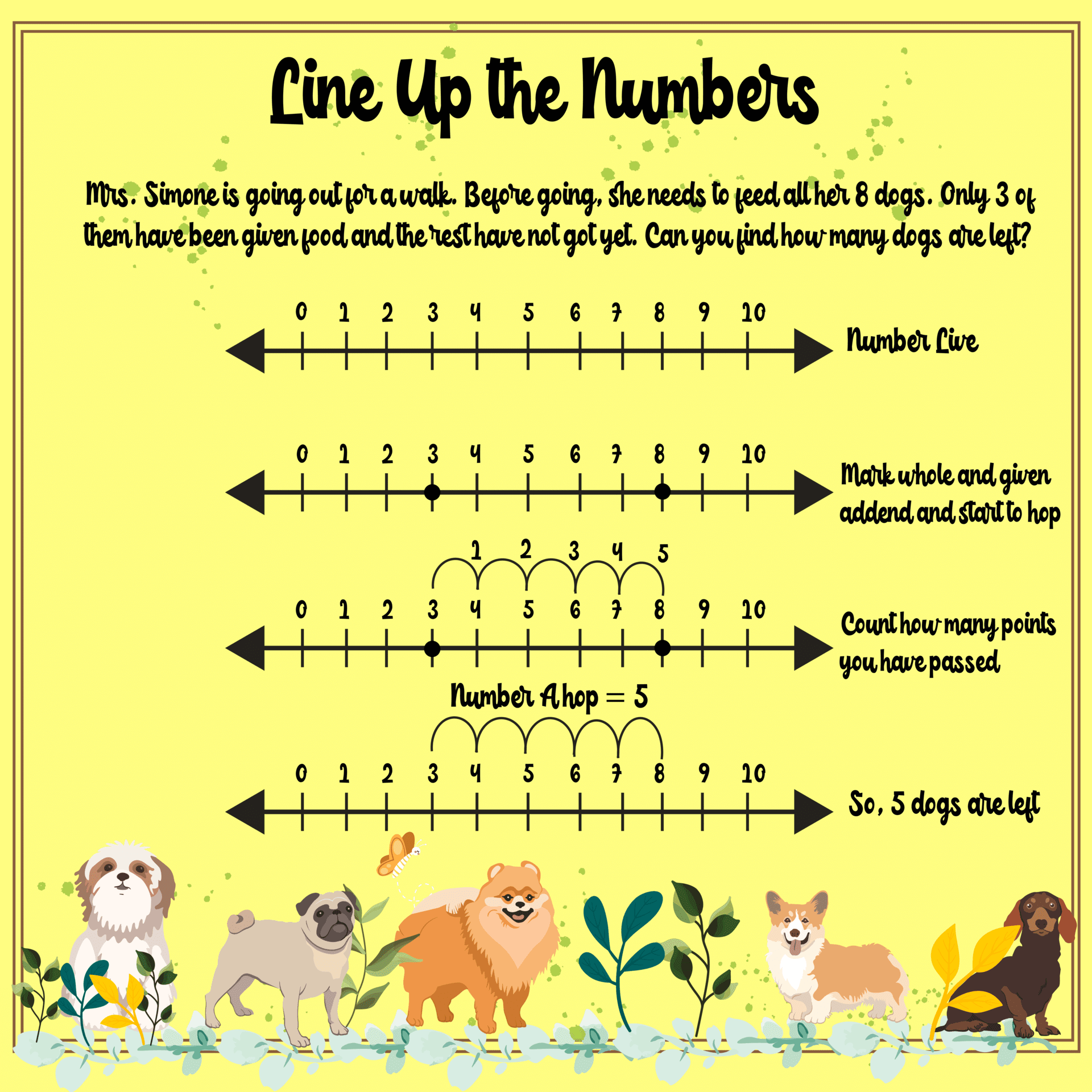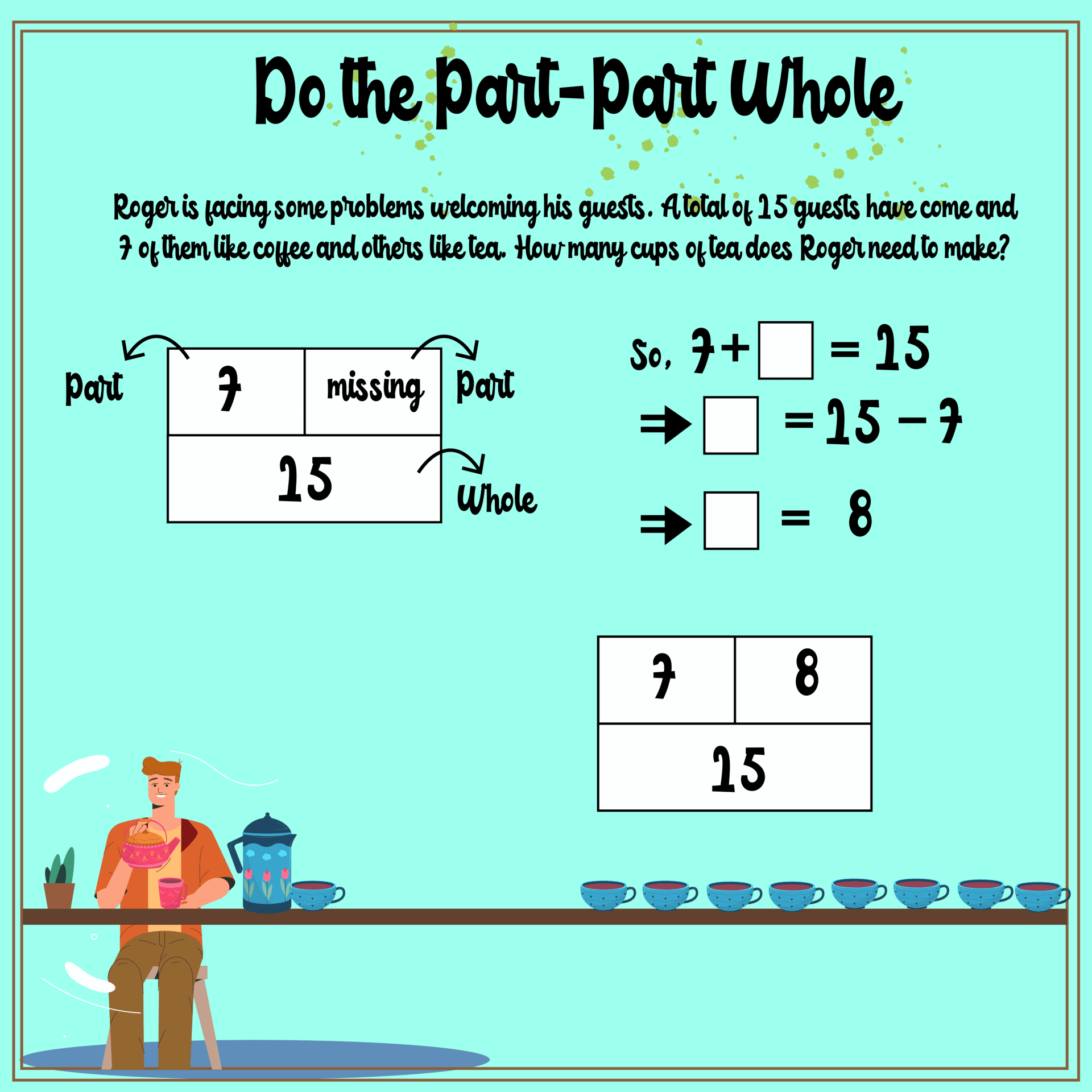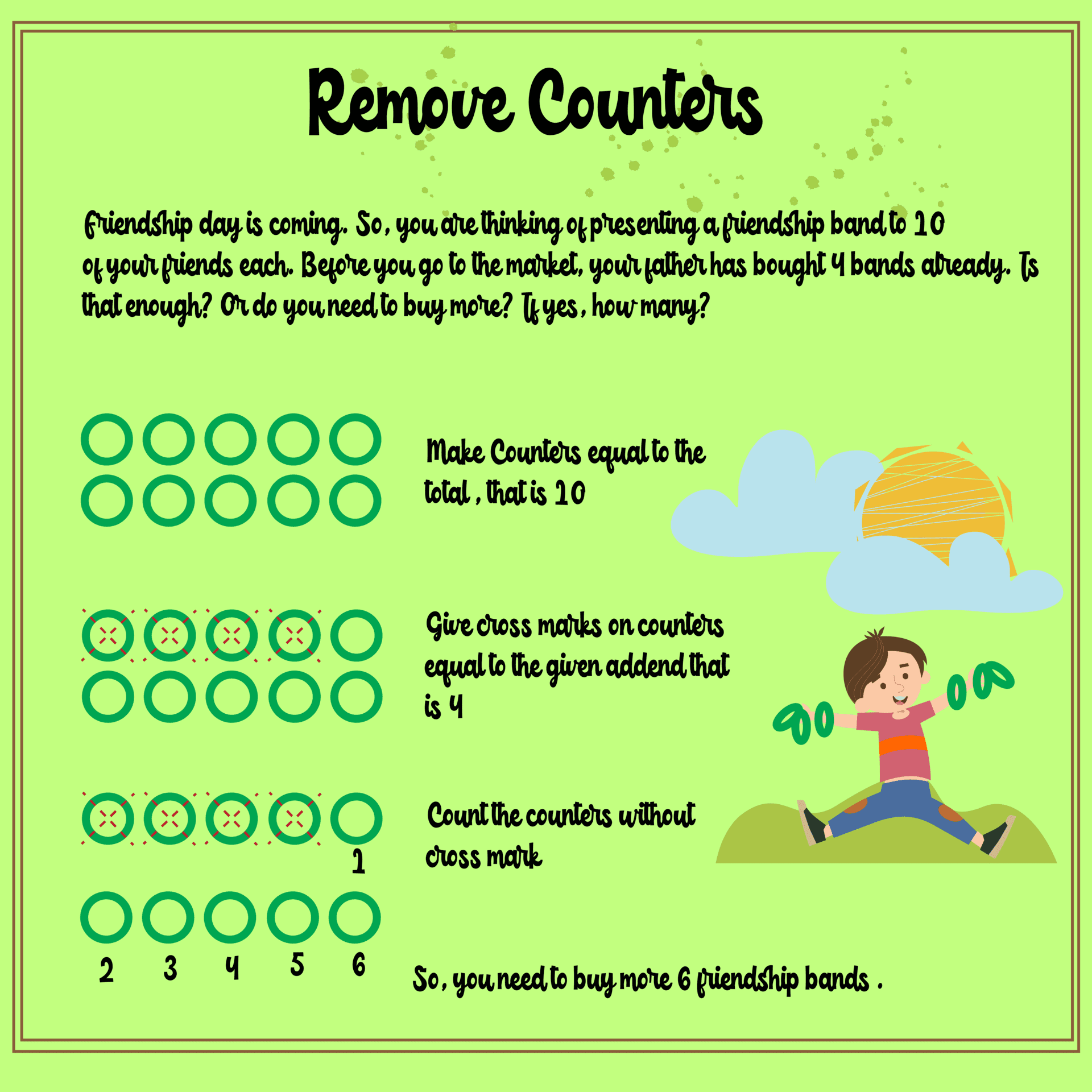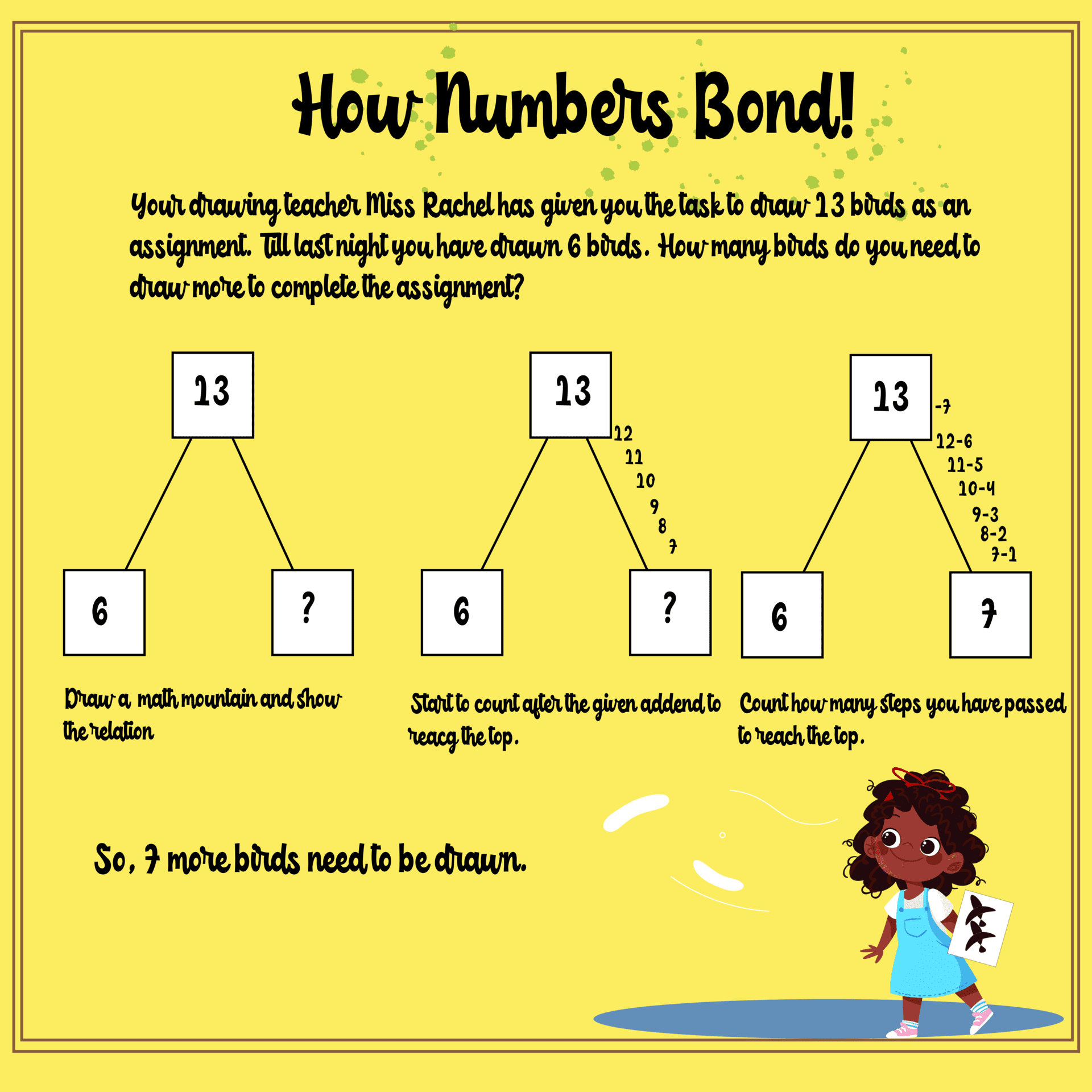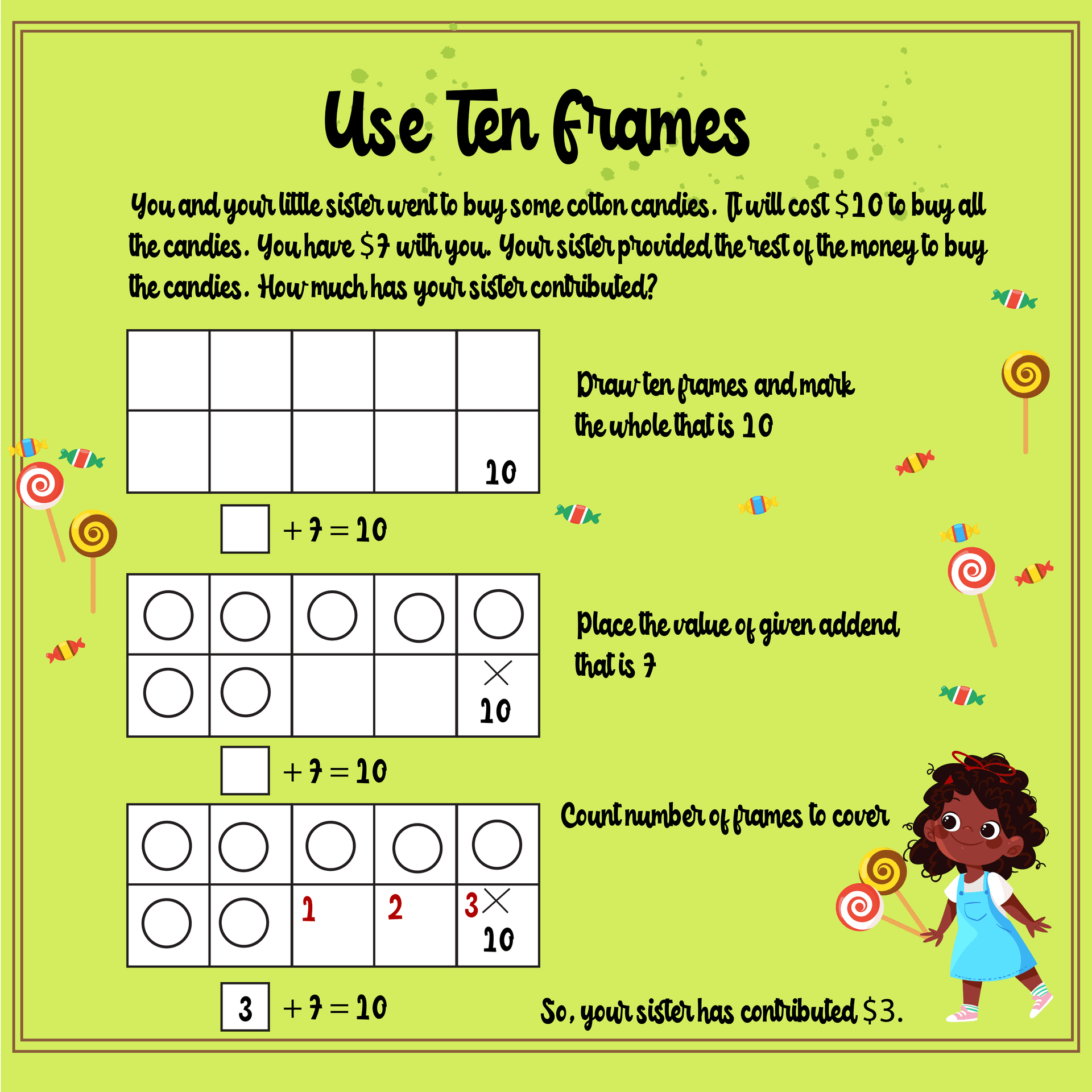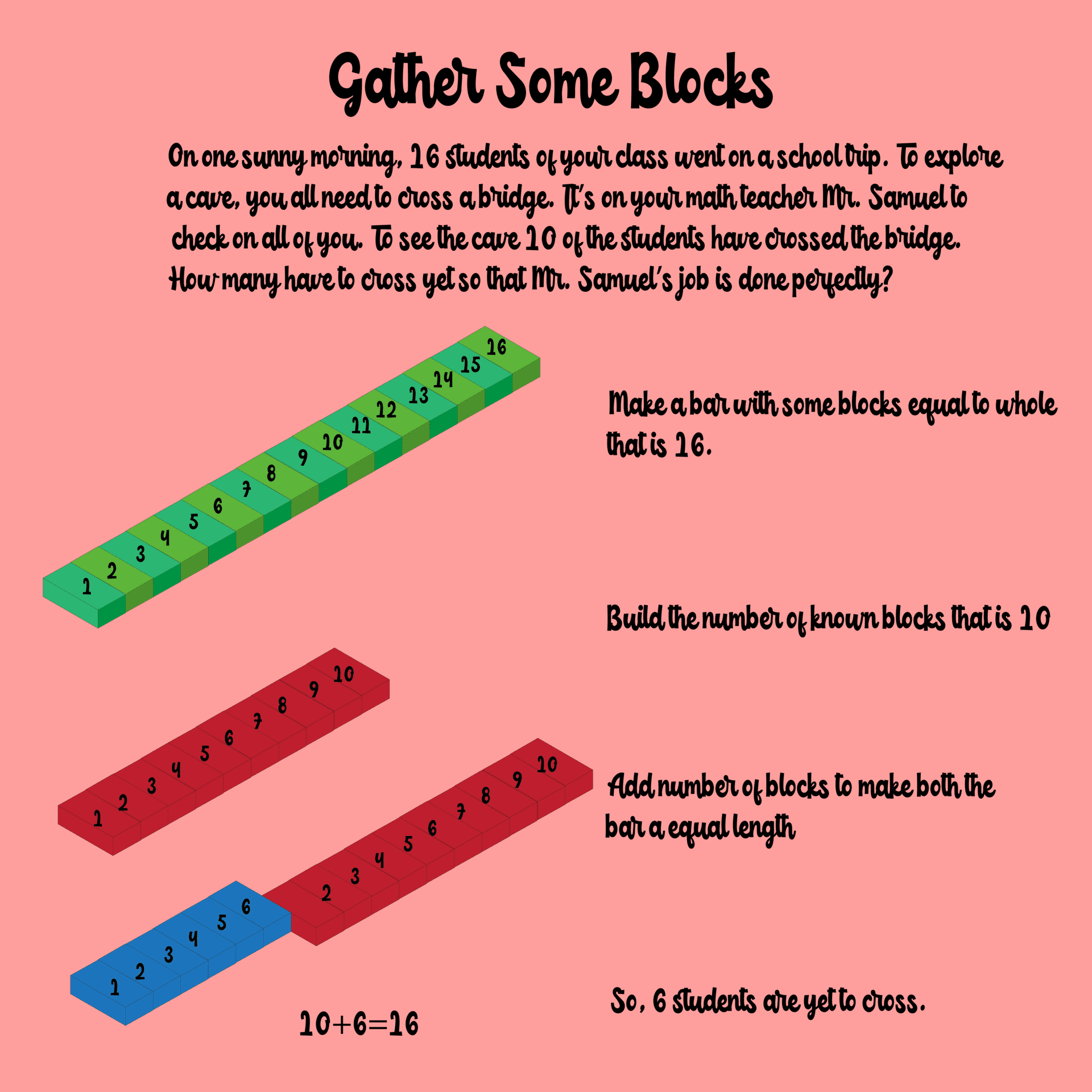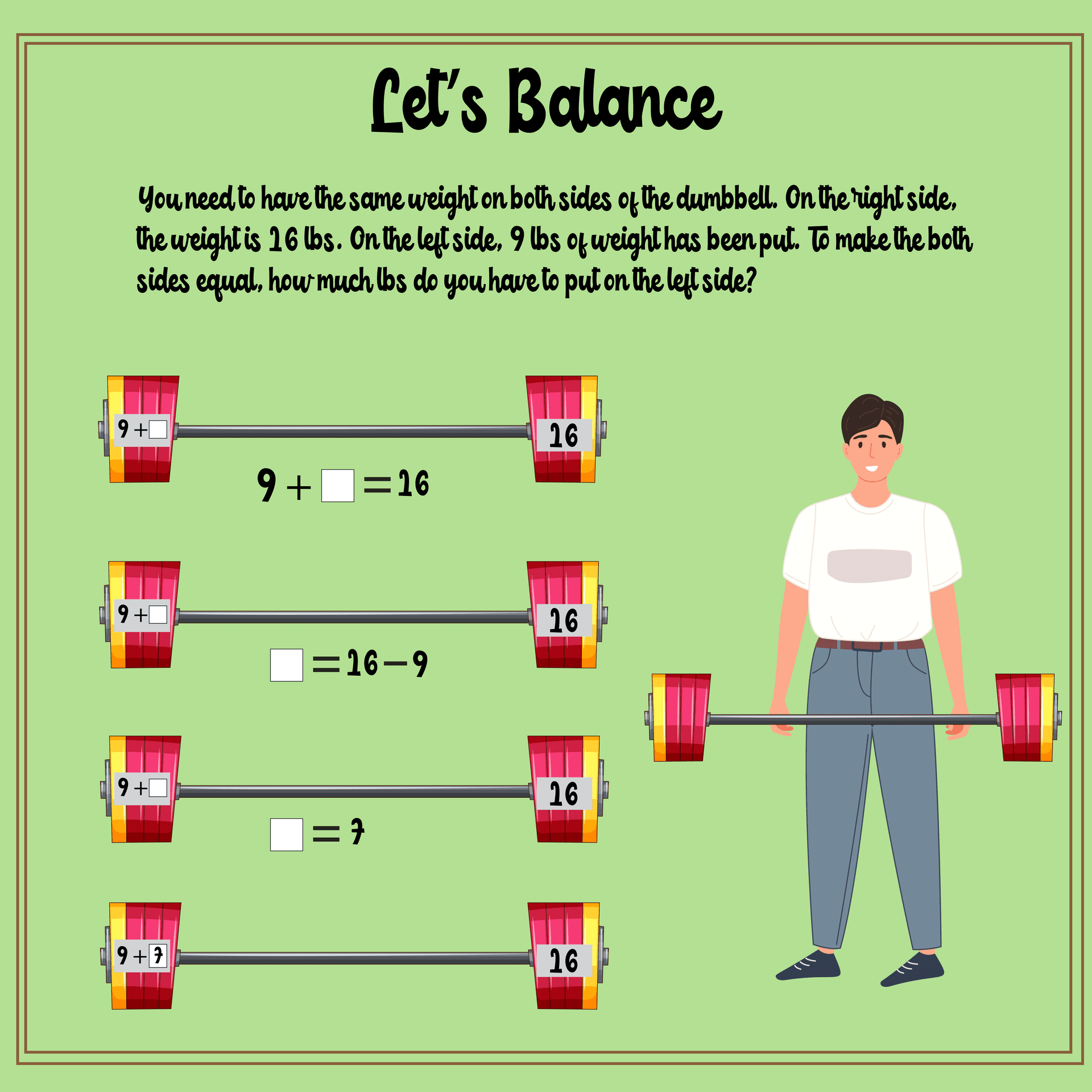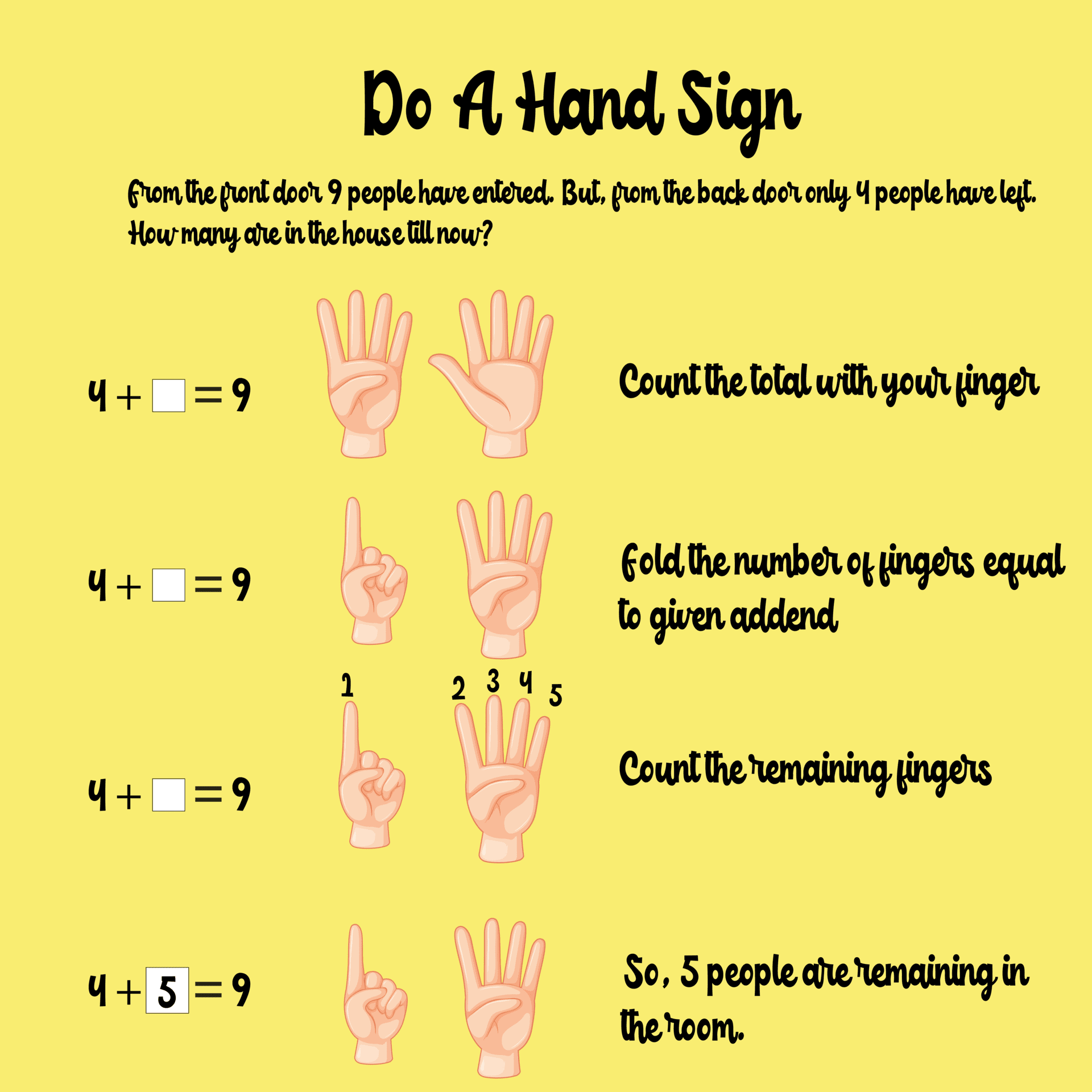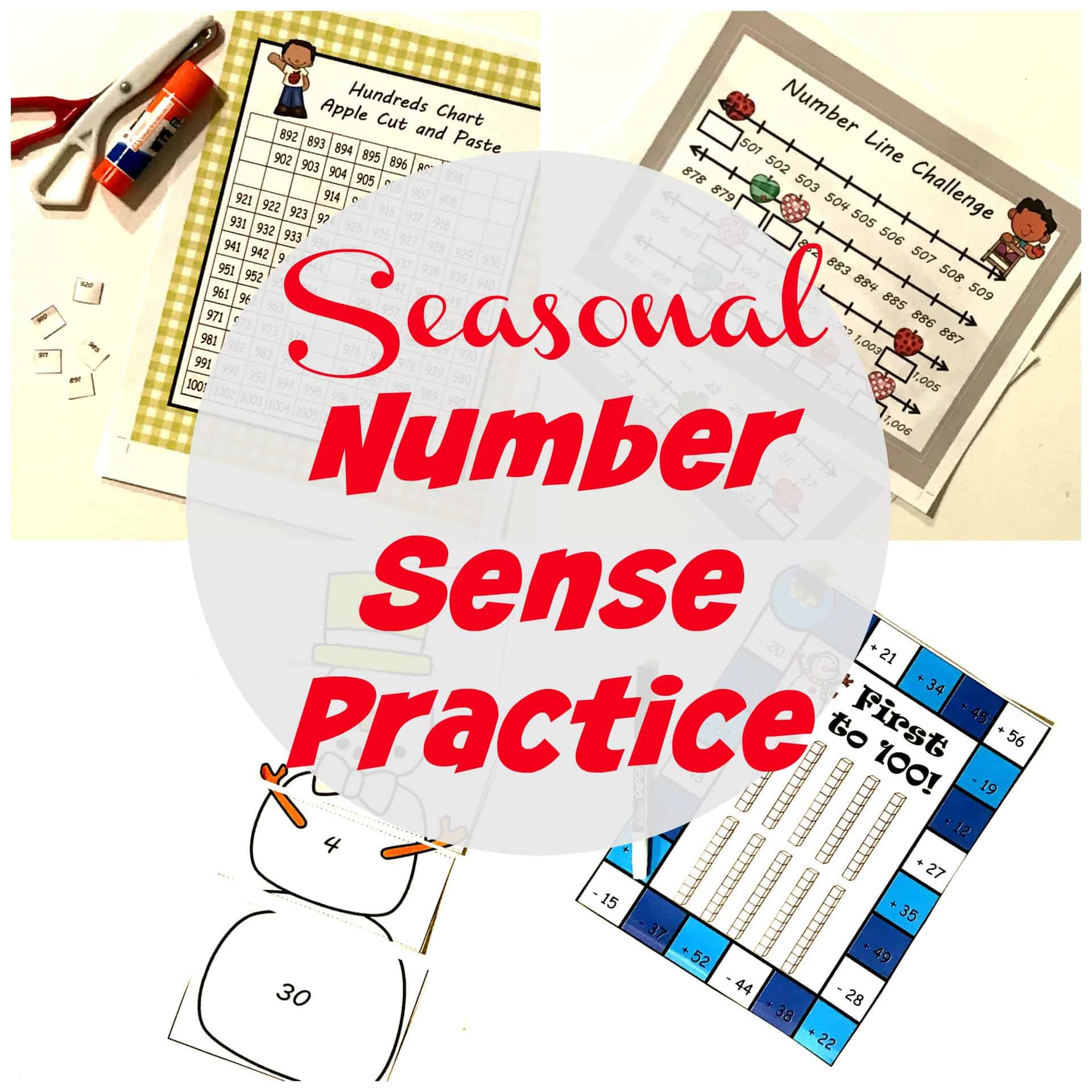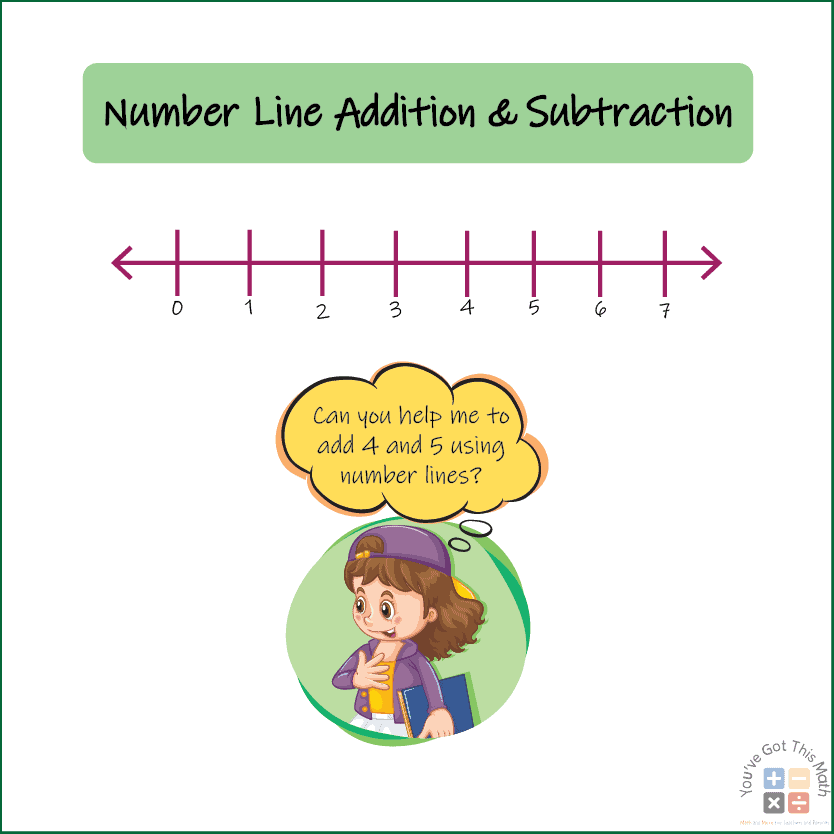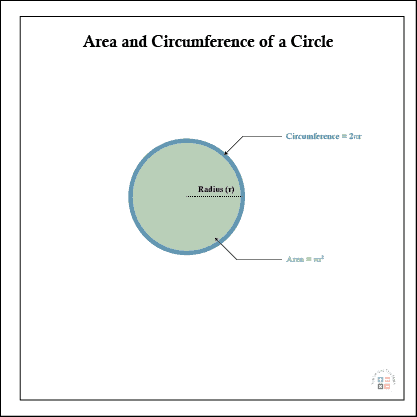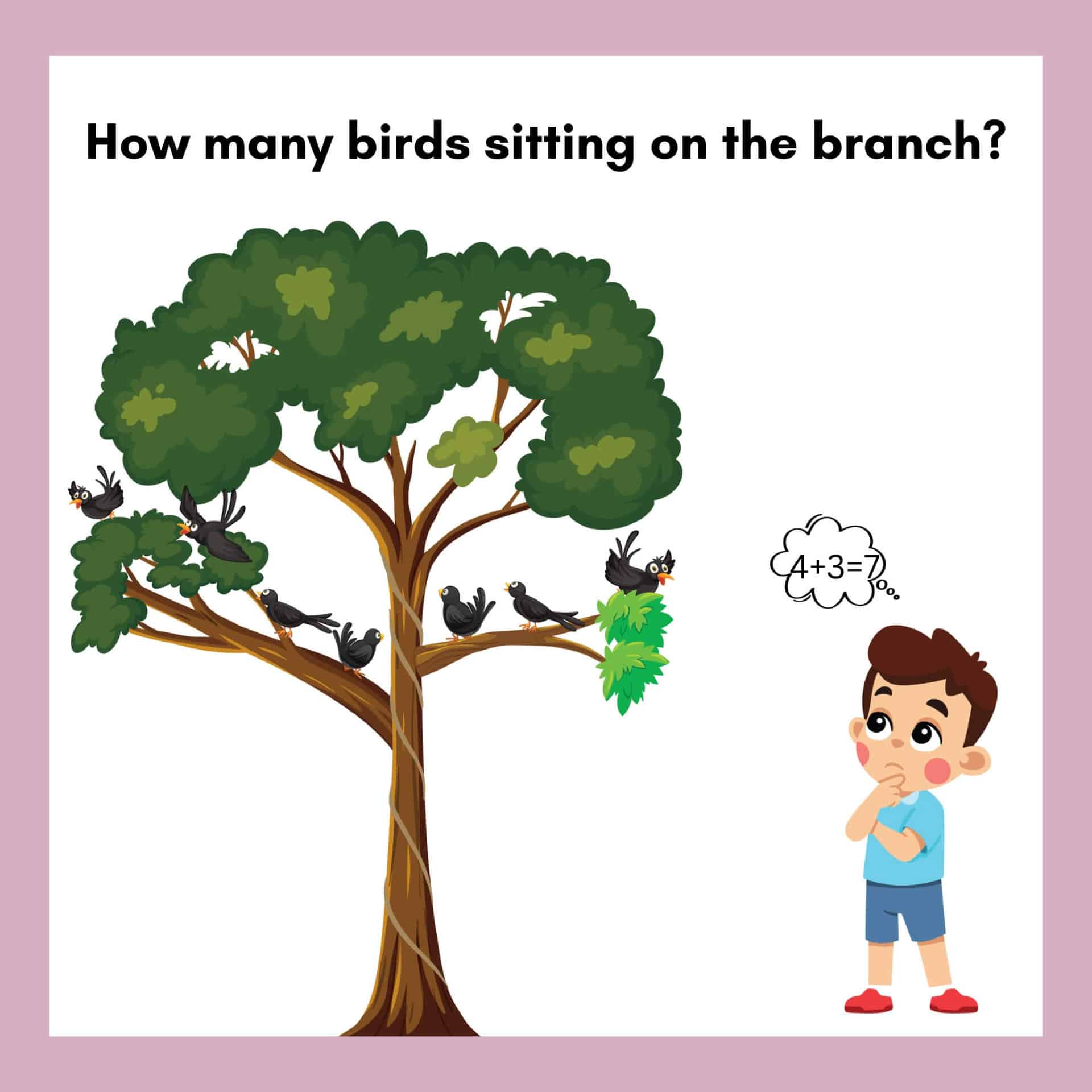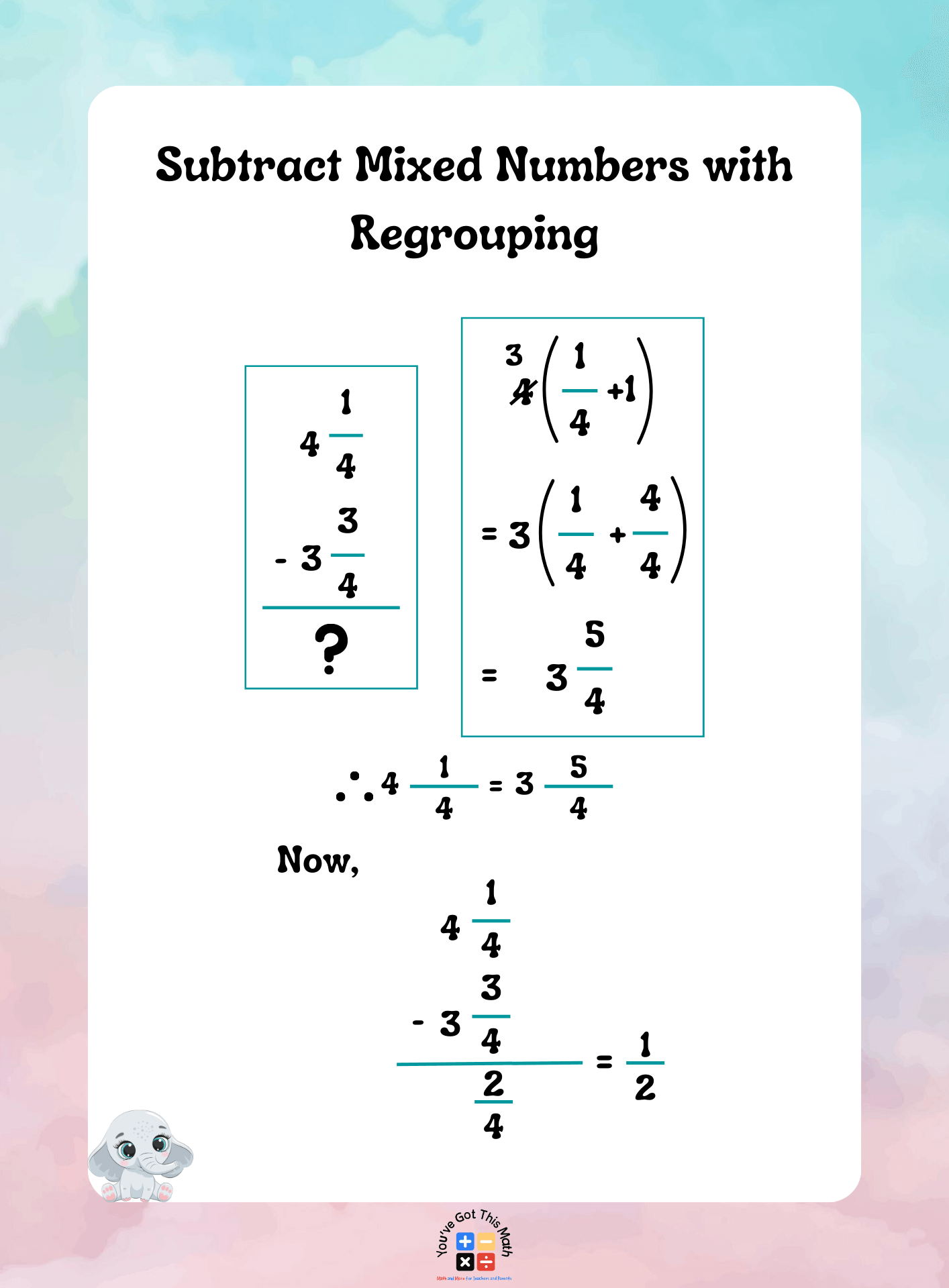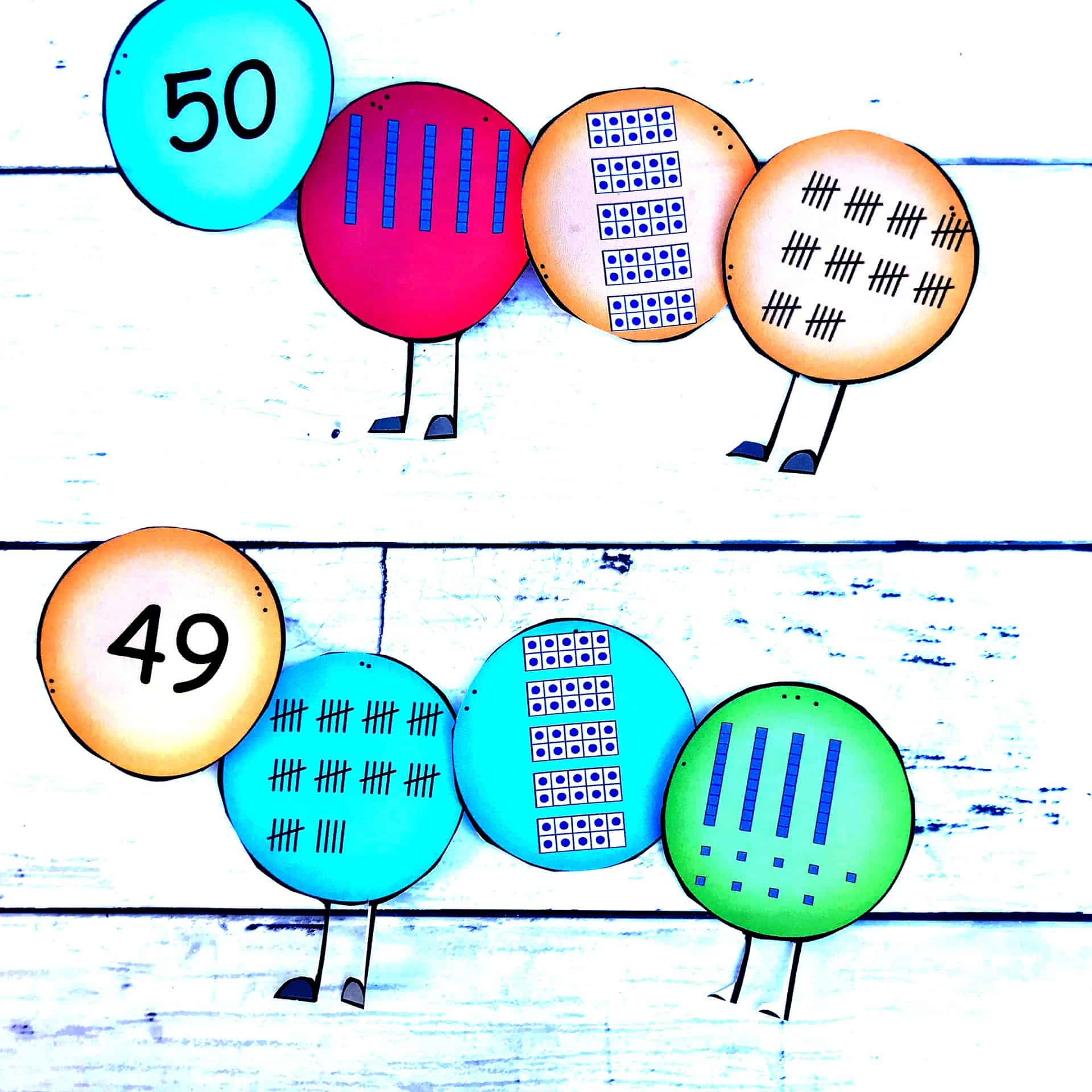8 Free Missing Addend Anchor Chart Examples
These missing addend anchor chart examples will help to visualize and understand the relation between two addends in the addition process and number systems. 1st-grade students will learn basic addition and subtraction methods and can improve their basic math skills with our free printable missing addend anchor chart examples.
8 Fun Examples to Learn Missing Addend Anchor Chart
Please download the following anchor chart examples and understand each concept given on the pages.
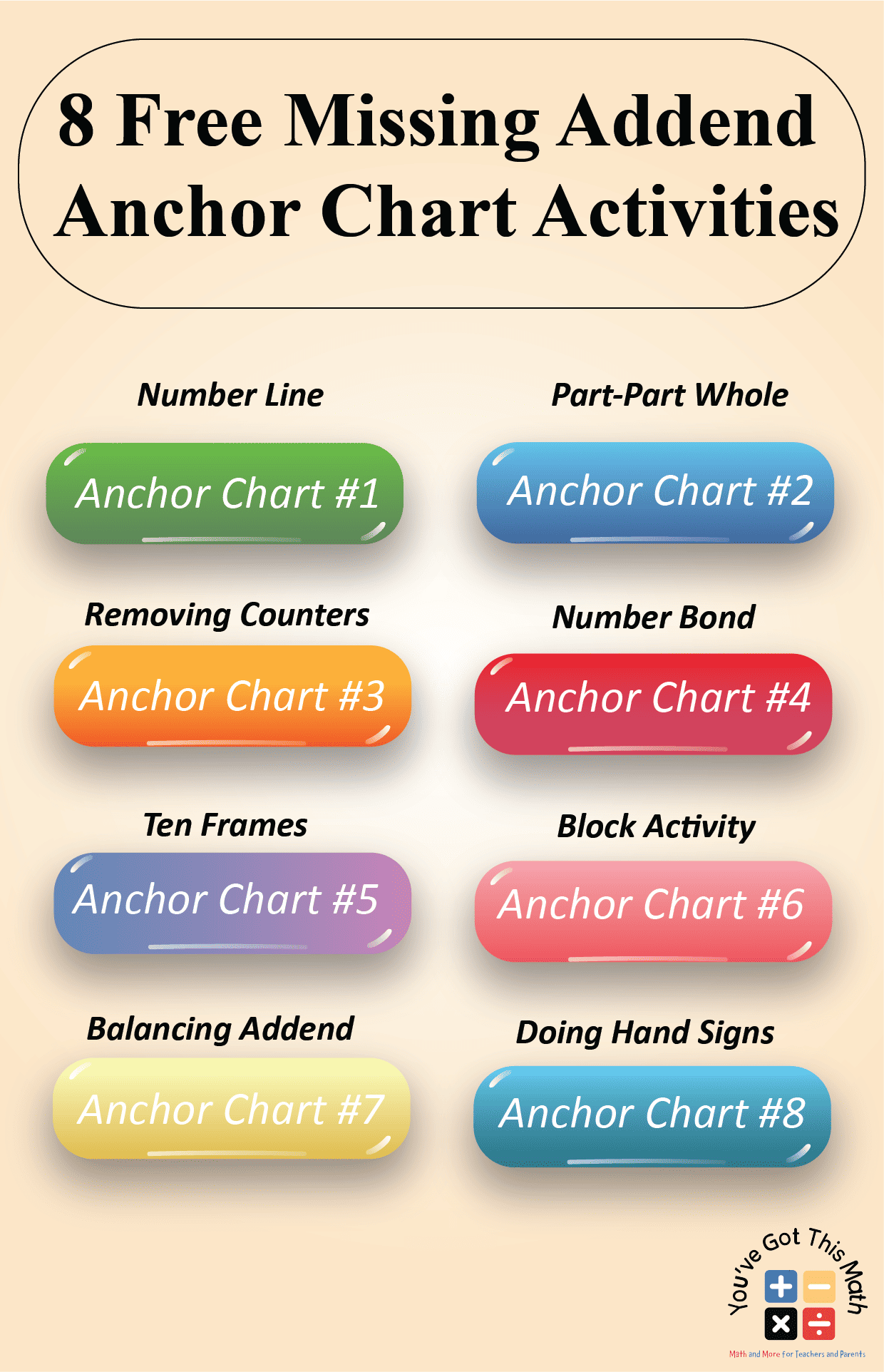
What Is an Anchor Chart?
In the previous section, you learned the basics of a missing addend. This time, you will be familiar with a new term named anchor chart. What does a missing addend with an anchor chart mean? A poster used to highlight key concepts in a lesson is known as an anchor chart.
The poster or chart acts as an anchor for keeping both the teachers’ and students’ gathered concepts, methods, and ideologies for solving a problem in one place. To solve a given problem, both the students and the teacher can share and save their ideas in these types of charts.
Missing Addend Anchor Chart Using Number Line
Finding missing addend is a fun thing for strengthening your little champ’s mathematical skills.
You can see the problem in the image below. Your first job is to find the required information and the value to be found. To find the missing addend, you can use a number line.
First, we are talking about the number line. Put the two values in the number line that you previously found in the question. Now, what to do? Here comes your analysis skill. You see there is some gap between the two numbers.
Start to hop from the first number to the second one. Remember how many points you have earned. When you have exactly come to the second number, stop hopping.
Missing Addend Anchor Chart Using Part Part Whole
The second way to find missing addend is to use a part-part whole box. This type of box is very useful for finding missing addend-related problems. You have to put the whole or the total number in the lower part of the box.
Then, you will notice two extra parts on the top side of the box. Place the first part, the first number, or the first number or first addend that you will find in your problem. Now the other part is empty.
What to do? As both the upper parts come together to make the lower value just subtract the given upper part from the total or the whole and find your missing addend.
Missing Addend Anchor Chart Using Counters
This fun activity is also useful for finding the missing addend. Let us explain.
Like the previous two activities, you can see a problem in the following image. Now, identify the total and the given addend from the problem. Then, draw an exact amount of your favorite shape equal to the whole or total. After that, give a cross sign on the number of shapes equal to the given addend.
Finally, count the number of counters without any cross marks and tell me what you know! This is your missing addend. Now, surprise your teacher by telling him the answer.
Missing Addend Anchor Chart Using Number Bond
To make a number mountain, From your given problem, take the bigger number and place it on the mountaintop. It is clear that the top is built by adding the bottom values. So, the next task is to place the smaller of the two numbers from the question and put it on the bottom-right side of the mountain.
It’s time to count. Start from the lower-left side of the mountain. See, there is no value here, and you have to find it. Remember the number from the bottom right? Start to count after that number and put a dot on the way from the missing addend’s space to the top of the mountain.
Keep putting dots on the page until you reach the top and your counting is finished. Now count the number of draws that you have to make to reach the top. Hurray!!! Show the answer and earn a good performer badge from your teacher.
Missing Addend Anchor Chart Using Ten Frames
Another strategy to find your missing addend is the use of ten frames. This is a rectangular-shaped frame where ten spaces are built. You can use this tool to practice your number problems that are between 1 to 10.
So what’s your role in using this tool? Let me explain. First of all, draw ten frames like the following image. Under the image, write the total or whole value. Then mark the room that is equal to the whole by counting from the left. This is your destination.
Take a colored pen and start to color the spaces in the frame. How many? Equal to the number that is given aside from the total in your problem. After all of these, you will see some white spaces or gaps left between the dots and the mark that was made in the first place. Count the number of white spaces and taste victory.
Missing Addend Anchor Chart Using Block Activity
Take your paper and some colored pencils. Like the previous instructions identify the given numbers. In your practice sheet, make a pillar of blocks that match the whole or total of your problem. Color the blocks after gathering. Then, notice the smaller number, and build the same number of blocks on the right side of the previous one.
Use another color to differentiate it from the other column. Count how many blocks are missing to make the whole column look like the previous one. The gap is our required missing addend.
Missing Addend Anchor Chart Using Balancing Addends
Imbalance means imperfection. Without balance, all your hard work will go to waste. Our following problem is also related to balance. Your job is to make the value equal on both sides in order to lift the dumbbell. For the solution take the help of the previous activity.
Missing Addend Anchor Chart Using Hand Signs
The last activity of missing the addend anchor chart will help you in this regard. Then counting with your fingers is your life savior. Firstly, find the whole problem and the given addend from the problem. Secondly, start to count from your left hand’s finger to the right.
Count the number of fingers that is equal to the given addend. Afterward, find the number of fingers that are required to fill the gap between the whole and the given addend. That’s the number we want to find.
Download Free Printable PDF
Download the following combined PDF and enjoy your practice session.
So today, some interactive missing addend anchor chart examples using the concepts of the part-part whole, counters, ten frames, and some interactive activities. Going through these examples, the students will improve their skills in finding missing addend. Download our free worksheets, and after going through these examples, students will surely improve their mathematical skills and have a better understanding of finding missing adend.
Hello, I am Md. Araf Bin Jayed. I have completed my B.Sc in Industrial and Production Engineering from Ahsanullah University of Science and Technology. Currently I am working as a Content Developer for You Have Got This Math at Softeko. With proper guidelines and aid from the parent organization Softeko, I want to represent typical math problems with easy solutions. With my acquired knowledge and hard work, I want to contribute to the overall growth of this organization.
